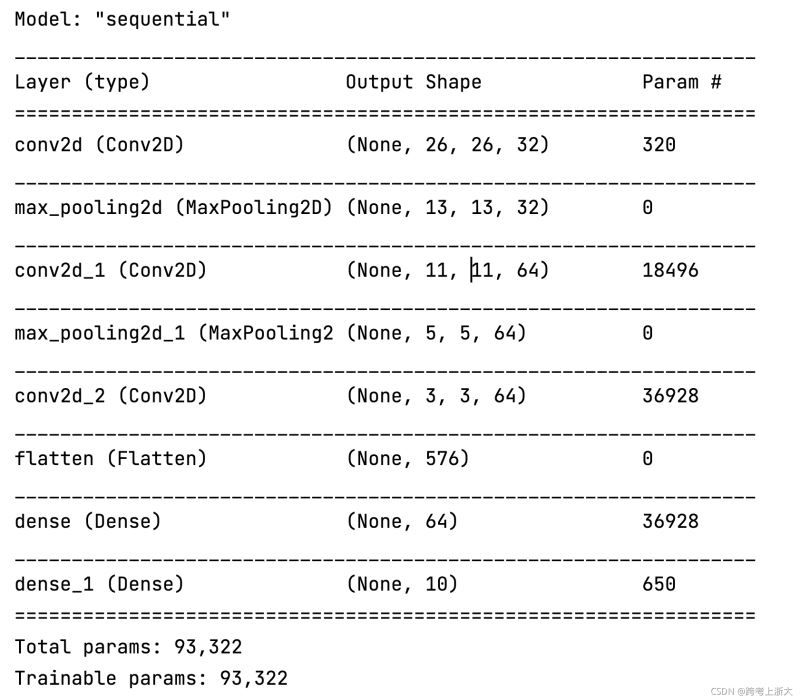这篇文章主要为大家展示了“Python中如何实现MNIST手写数字识别功能”,内容简而易懂,条理清晰,希望能够帮助大家解决疑惑,下面让小编带领大家一起研究并学习一下“Python中如何实现MNIST手写数字识别功能”这篇文章吧。
数据集介绍
MNIST数据集是机器学习领域中非常经典的一个数据集,由60000个训练样本和10000个测试样本组成,每个样本都是一张28 * 28像素的灰度手写数字图片,且内置于keras。本文采用Tensorflow下Keras(Keras中文文档)神经网络API进行网络搭建。
开始之前,先回忆下机器学习的通用工作流程( √表示本文用到,×表示本文没有用到 )
定义问题,收集数据集(√)
选择衡量成功的指标(√)
确定评估的方法(√)
准备数据(√)
开发比基准更好的模型(×)
扩大模型规模(×)
模型正则化与调节参数(×)
关于最后一层激活函数与损失函数的选择

下面开始正文~
1.数据预处理
首先导入数据,要使用mnist.load()函数
我们来看看它的源码声明:
def load_data(path='mnist.npz'): """Loads the [MNIST dataset](http://yann.lecun.com/exdb/mnist/). This is a dataset of 60,000 28x28 grayscale images of the 10 digits, along with a test set of 10,000 images. More info can be found at the [MNIST homepage](http://yann.lecun.com/exdb/mnist/). Arguments: path: path where to cache the dataset locally (relative to `~/.keras/datasets`). Returns: Tuple of Numpy arrays: `(x_train, y_train), (x_test, y_test)`. **x_train, x_test**: uint8 arrays of grayscale image data with shapes (num_samples, 28, 28). **y_train, y_test**: uint8 arrays of digit labels (integers in range 0-9) with shapes (num_samples,). """可以看到,里面包含了数据集的下载链接,以及数据集规模、尺寸以及数据类型的声明,且函数返回的是四个numpy array组成的两个元组。
导入数据集并reshape至想要形状,再标准化处理。
其中内置于keras的to_categorical()就是one-hot编码——将每个标签表示为全零向量,只有标签索引对应的元素为1.
eg: col=10
[0,1,9]-------->[ [1,0,0,0,0,0,0,0,0,0], [0,1,0,0,0,0,0,0,0,0], [0,0,0,0,0,0,0,0,0,1] ]我们可以手动实现它:
def one_hot(sequences,col): resuts=np.zeros((len(sequences),col)) # for i,sequence in enumerate(sequences): # resuts[i,sequence]=1 for i in range(len(sequences)): for j in range(len(sequences[i])): resuts[i,sequences[i][j]]=1 return resuts下面是预处理过程
def data_preprocess(): (train_images, train_labels), (test_images, test_labels) = mnist.load_data() train_images = train_images.reshape((60000, 28, 28, 1)) train_images = train_images.astype('float32') / 255 #print(train_images[0]) test_images = test_images.reshape((10000, 28, 28, 1)) test_images = test_images.astype('float32') / 255 train_labels = to_categorical(train_labels) test_labels = to_categorical(test_labels) return train_images,train_labels,test_images,test_labels2.网络搭建
这里我们搭建的是卷积神经网络,就是包含一些卷积、池化、全连接的简单线性堆积。我们知道多个线性层堆叠实现的仍然是线性运算,添加层数并不会扩展假设空间(从输入数据到输出数据的所有可能的线性变换集合),因此需要添加非线性或激活函数。relu是最常用的激活函数,也可以用prelu、elu
def build_module(): model = models.Sequential() #第一层卷积层,首层需要指出input_shape形状 model.add(layers.Conv2D(32, (3,3), activation='relu', input_shape=(28,28,1))) #第二层最大池化层 model.add(layers.MaxPooling2D((2,2))) #第三层卷积层 model.add(layers.Conv2D(64, (3,3), activation='relu')) #第四层最大池化层 model.add(layers.MaxPooling2D((2,2))) #第五层卷积层 model.add(layers.Conv2D(64, (3,3), activation='relu')) #第六层Flatten层,将3D张量平铺为向量 model.add(layers.Flatten()) #第七层全连接层 model.add(layers.Dense(64, activation='relu')) #第八层softmax层,进行分类 model.add(layers.Dense(10, activation='softmax')) return model使用model.summary()查看搭建的网路结构:

3.网络配置
网络搭建好之后还需要关键的一步设置配置。比如:优化器——网络梯度下降进行参数更新的具体方法、损失函数——衡量生成值与目标值之间的距离、评估指标等。配置这些可以通过 model.compile() 参数传递做到。
我们来看看model.compile()的源码分析下:
def compile(self, optimizer='rmsprop', loss=None, metrics=None, loss_weights=None, weighted_metrics=None, run_eagerly=None, steps_per_execution=None, **kwargs): """Configures the model for training.
关于优化器
优化器:字符串(优化器名称)或优化器实例。
字符串格式:比如使用优化器的默认参数
实例优化器进行参数传入:
keras.optimizers.RMSprop(lr=0.001, rho=0.9, epsilon=None, decay=0.0)model.compile(optimizer='rmsprop',loss='mean_squared_error')建议使用优化器的默认参数 (除了学习率 lr,它可以被自由调节)
参数:
lr: float >= 0. 学习率。rho: float >= 0. RMSProp梯度平方的移动均值的衰减率.epsilon: float >= 0. 模糊因子. 若为 None, 默认为 K.epsilon()。decay: float >= 0. 每次参数更新后学习率衰减值。类似还有好多优化器,比如SGD、Adagrad、Adadelta、Adam、Adamax、Nadam等
关于损失函数
取决于具体任务,一般来说损失函数要能够很好的刻画任务。比如
回归问题
希望神经网络输出的值与ground-truth的距离更近,选取能刻画距离的loss应该会更合适,比如L1 Loss、MSE Loss等
分类问题
希望神经网络输出的类别与ground-truth的类别一致,选取能刻画类别分布的loss应该会更合适,比如cross_entropy
具体常见选择可查看文章开始处关于损失函数的选择
关于指标
常规使用查看上述列表即可。下面说说自定义评价函数:它应该在编译的时候(compile)传递进去。该函数需要以 (y_true, y_pred) 作为输入参数,并返回一个张量作为输出结果。
import keras.backend as Kdef mean_pred(y_true, y_pred): return K.mean(y_pred)model.compile(optimizer='rmsprop', loss='binary_crossentropy', metrics=['accuracy', mean_pred])4.网络训练与测试
训练(拟合)
使用model.fit(),它可以接受的参数列表
def fit(self, x=None, y=None, batch_size=None, epochs=1, verbose=1, callbacks=None, validation_split=0., validation_data=None, shuffle=True, class_weight=None, sample_weight=None, initial_epoch=0, steps_per_epoch=None, validation_steps=None, validation_batch_size=None, validation_freq=1, max_queue_size=10, workers=1, use_multiprocessing=False):这个源码有300多行长,具体的解读放在下次。
我们对训练数据进行划分,以64个样本为小批量进行网络传递,对所有数据迭代5次
model.fit(train_images, train_labels, epochs = 5, batch_size=64)测试
使用model.evaluates()函数
test_loss, test_acc = model.evaluate(test_images, test_labels)关于测试函数的返回声明:
Returns: Scalar test loss (if the model has a single output and no metrics) or list of scalars (if the model has multiple outputs and/or metrics). The attribute `model.metrics_names` will give you the display labels for the scalar outputs.5.绘制loss和accuracy随着epochs的变化图
model.fit()返回一个History对象,它包含一个history成员,记录了训练过程的所有数据。
我们采用matplotlib.pyplot进行绘图,具体见后面完整代码。
Returns: A `History` object. Its `History.history` attribute is a record of training loss values and metrics values at successive epochs, as well as validation loss values and validation metrics values (if applicable).def draw_loss(history): loss=history.history['loss'] epochs=range(1,len(loss)+1) plt.subplot(1,2,1)#第一张图 plt.plot(epochs,loss,'bo',label='Training loss') plt.title("Training loss") plt.xlabel('Epochs') plt.ylabel('Loss') plt.legend() plt.subplot(1,2,2)#第二张图 accuracy=history.history['accuracy'] plt.plot(epochs,accuracy,'bo',label='Training accuracy') plt.title("Training accuracy") plt.xlabel('Epochs') plt.ylabel('Accuracy') plt.suptitle("Train data") plt.legend() plt.show()6.完整代码
from tensorflow.keras.datasets import mnistfrom tensorflow.keras import modelsfrom tensorflow.keras import layersfrom tensorflow.keras.utils import to_categoricalimport matplotlib.pyplot as pltimport numpy as npdef data_preprocess(): (train_images, train_labels), (test_images, test_labels) = mnist.load_data() train_images = train_images.reshape((60000, 28, 28, 1)) train_images = train_images.astype('float32') / 255 #print(train_images[0]) test_images = test_images.reshape((10000, 28, 28, 1)) test_images = test_images.astype('float32') / 255 train_labels = to_categorical(train_labels) test_labels = to_categorical(test_labels) return train_images,train_labels,test_images,test_labels#搭建网络def build_module(): model = models.Sequential() #第一层卷积层 model.add(layers.Conv2D(32, (3,3), activation='relu', input_shape=(28,28,1))) #第二层最大池化层 model.add(layers.MaxPooling2D((2,2))) #第三层卷积层 model.add(layers.Conv2D(64, (3,3), activation='relu')) #第四层最大池化层 model.add(layers.MaxPooling2D((2,2))) #第五层卷积层 model.add(layers.Conv2D(64, (3,3), activation='relu')) #第六层Flatten层,将3D张量平铺为向量 model.add(layers.Flatten()) #第七层全连接层 model.add(layers.Dense(64, activation='relu')) #第八层softmax层,进行分类 model.add(layers.Dense(10, activation='softmax')) return modeldef draw_loss(history): loss=history.history['loss'] epochs=range(1,len(loss)+1) plt.subplot(1,2,1)#第一张图 plt.plot(epochs,loss,'bo',label='Training loss') plt.title("Training loss") plt.xlabel('Epochs') plt.ylabel('Loss') plt.legend() plt.subplot(1,2,2)#第二张图 accuracy=history.history['accuracy'] plt.plot(epochs,accuracy,'bo',label='Training accuracy') plt.title("Training accuracy") plt.xlabel('Epochs') plt.ylabel('Accuracy') plt.suptitle("Train data") plt.legend() plt.show()if __name__=='__main__': train_images,train_labels,test_images,test_labels=data_preprocess() model=build_module() print(model.summary()) model.compile(optimizer='rmsprop', loss = 'categorical_crossentropy', metrics=['accuracy']) history=model.fit(train_images, train_labels, epochs = 5, batch_size=64) draw_loss(history) test_loss, test_acc = model.evaluate(test_images, test_labels) print('test_loss=',test_loss,' test_acc = ', test_acc)迭代训练过程中loss和accuracy的变化


由于数据集比较简单,随便的神经网络设计在测试集的准确率可达到99.2%
以上是“Python中如何实现MNIST手写数字识别功能”这篇文章的所有内容,感谢各位的阅读!相信大家都有了一定的了解,希望分享的内容对大家有所帮助,如果还想学习更多知识,欢迎关注编程网行业资讯频道!




